Dmitry Tokoyakov began his career as a compositor and rose through the ranks to become VFX Supervisor. He worked many years at Bazelevs and oversaw the effects of movies like WANTED or APOLLO 18. In the following interview, Dmitry talks about his work on THE DARKEST HOUR.
What is your background?
I started out as a compositing artist at one of Russia’s biggest VFX houses of the time, then gradually moved to a supervising position. Many of our early projects were commercials, which gave me a good survival experience, when the work had to be delivered no matter what the obstacles were. Eventually, I was invited to work on WANTED, which was the biggest challenge that Russian VFX industry has faced. I’ve met Stefen Fangmeier, movie’s overall Supervisor.
Working with him, I’ve learned a lot and that led to a next step. After the show was wrapped, Timur Bekmambetov has offered me to lead his VFX house and put together a new team.
With Stefen’s advice and his Russian working experience, we set up a facility based on ILM’s management principles. That allowed us to complete over 700 shots for the next Universal’s feature, BLACK LIGHTNING, in only 4 months.
How did you got involved on this show?
After we put the oldtimer car in the air on BLACK LIGHTNING, I’ve met Chris Gorak, who came to Moscow to see the future locations for THE DARKEST HOUR. We started discussing the script and ideas came sparking in the air right away.
Our team has started developing all of the visuals for the project and shaping creative ideas into images and live action shots.
How was the collaboration with director Chris Gorak?
Chris has a strong artistic background, which made our work incredibly effective. Some of our concept artists didn’t speak English very well, but when Chris would sit down for a minute and put a few sketches over our concept art, there was no need for words any more. He was very open to ideas and has adopted many of them in the movie.
How was the collaboration with Production VFX Supervisor Stefen Fangmeier?
I was very happy to work with my mentor again. He joined the project at a later stage, when principal photography in Moscow was about to begin. Stefen’s experience is just overwhelming. He reminds me of a big sailboat captain, who can oversee the entire ship and not miss even a small detail. His jokes have kept the crew smiling even when we shot long nights.
What have you done on this show?
After completing the RnD and look development work, I worked on set as a second VFX Supervisor along with Stefen. We usually split between the two units. After the shoot was over, I was responsible for all of the work done in Russia.
Our team did all of the “shred” effects, when the aliens destroy humans, plus a number of “alien presence” effects, which is a subtle revelation of an alien force field.
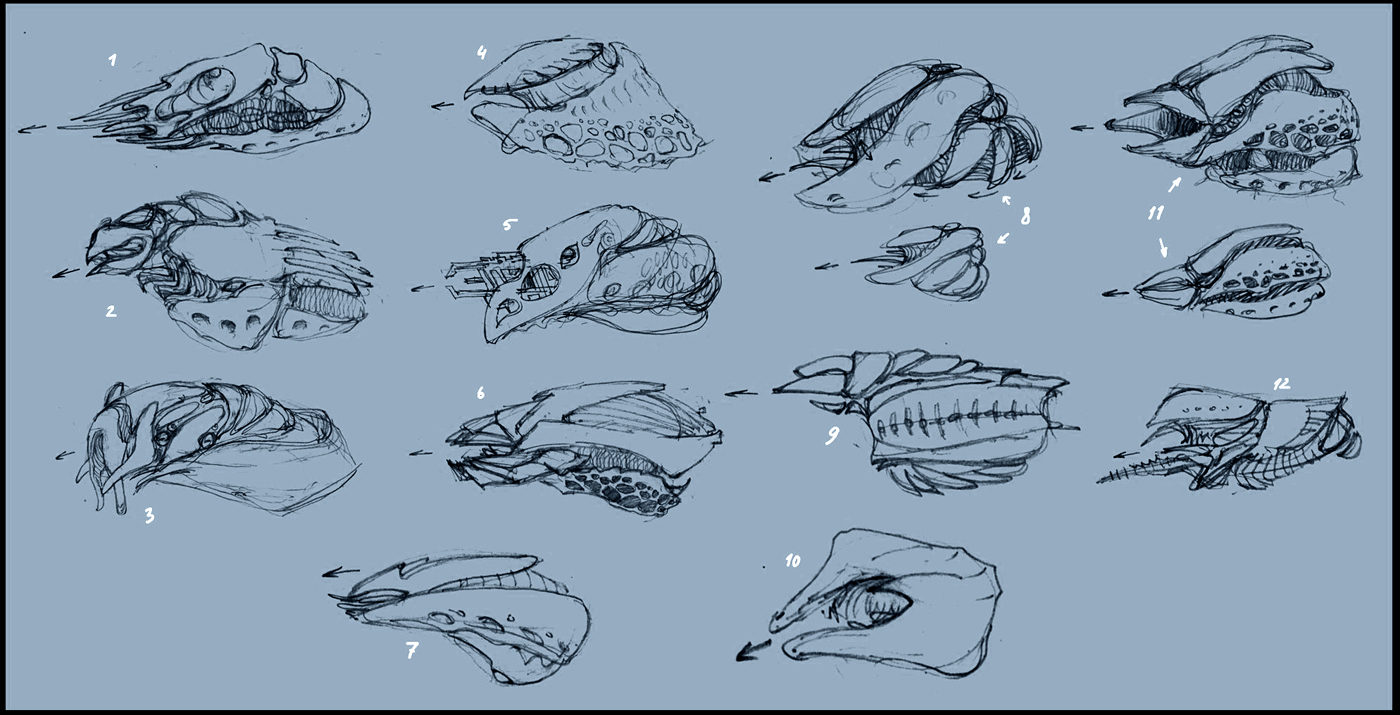 |
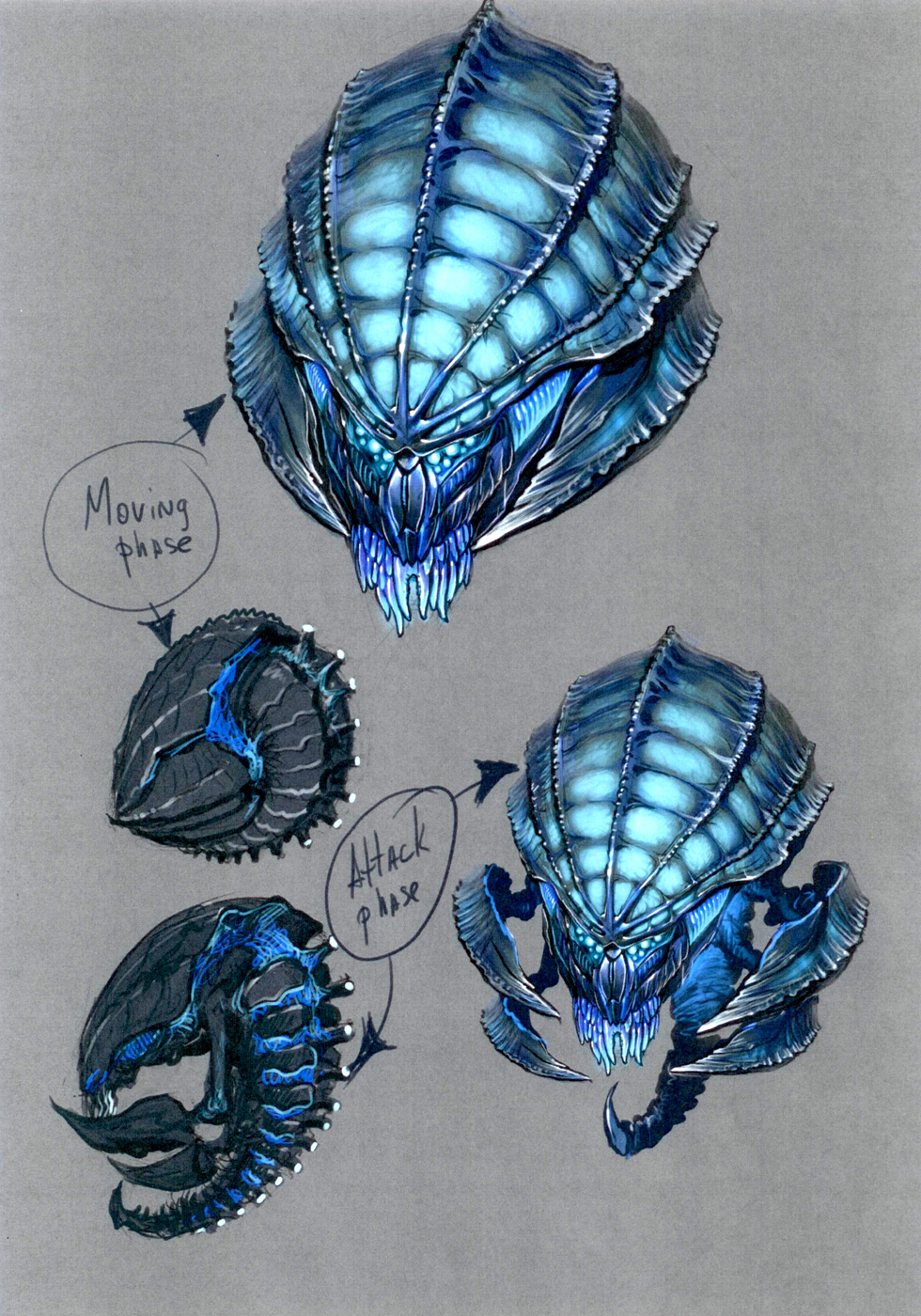 |
Can you tell us more about this original alien design?
We have made about 50 different designs for the alien, using lots of approaches to the creature. Jelly fish, demons, spiders, all kinds of fantasy monsters, even microorganisms were used in designing an alien that had to be unique and would work with the movie’s energy-based idea. This was the “visible” design, when the alien is stripped of his cloaking shield. The actual movie features a different alien, designed by BUF in France.
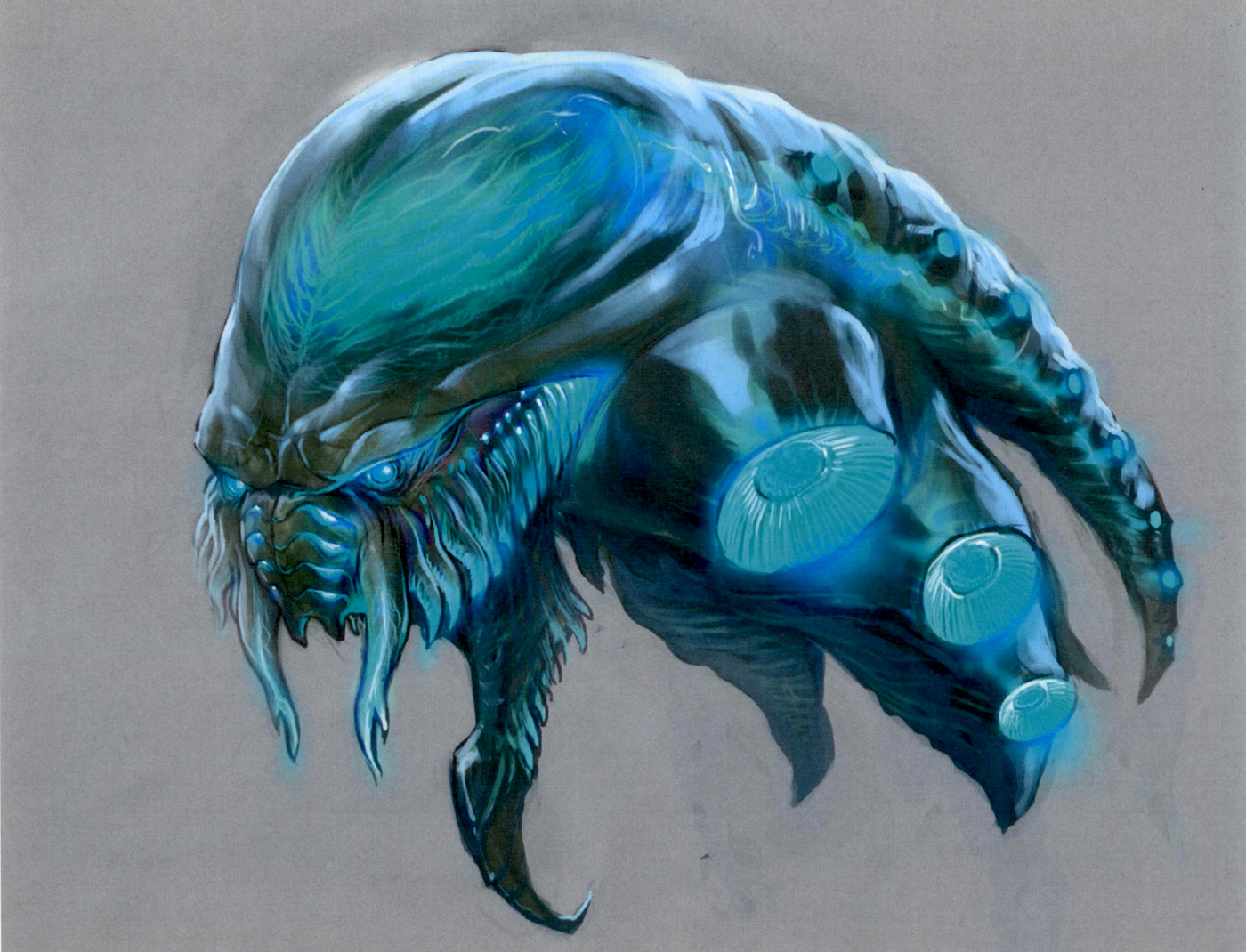 |
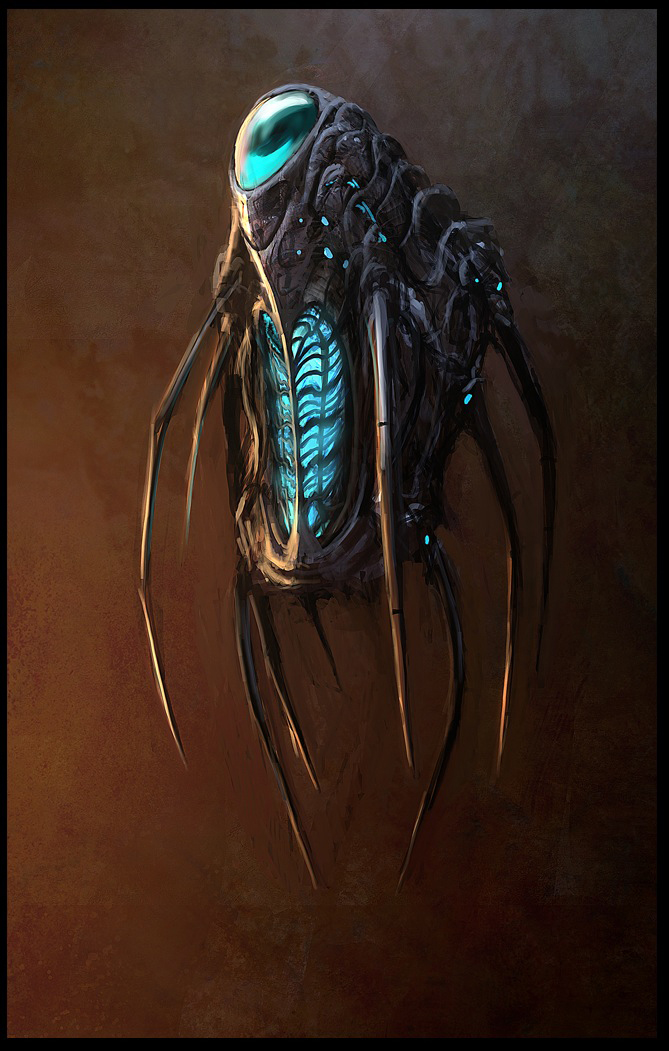 |
 |
 |
What was the main idea for the Aliens?
The script had them described as energy-based beings. Our early discussions were mostly around degree of their physical visibility. Then we agreed that the aliens will be cloaked by some energy shield and come to light when that shield is damaged by the microwave gun. The main challenge was to make them feel physically possible, not magic. And, they had to be able to shred people too.
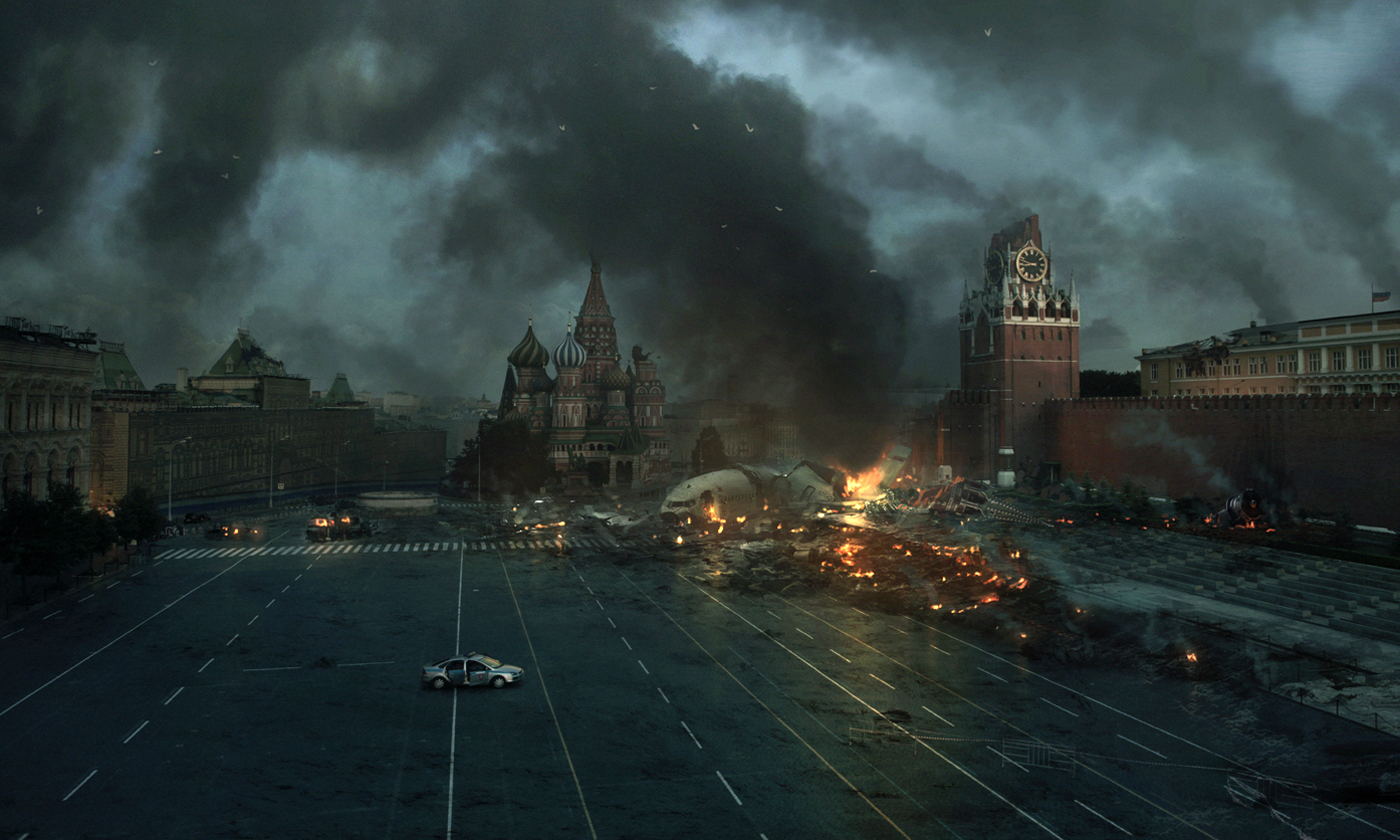 |
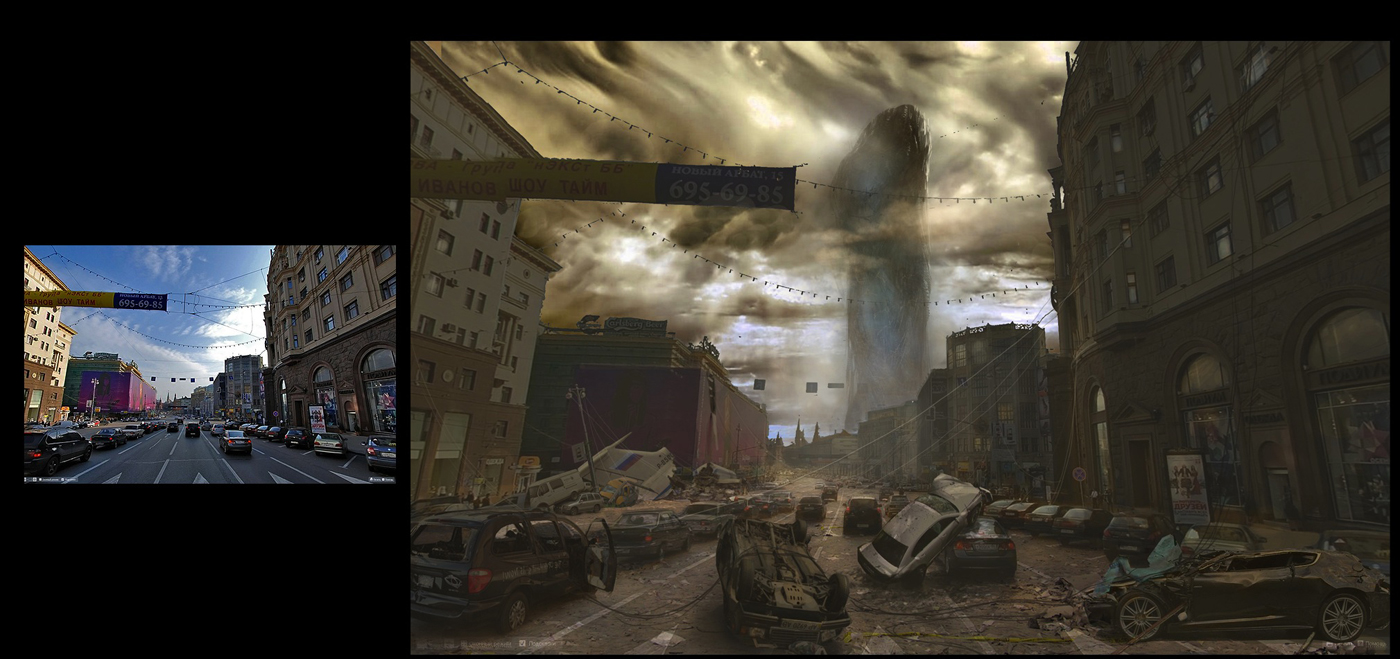 |
How did you create the impressive shred effects?
We started by putting different streams of particles together, playing with color and density. At some point, it formed into an interesting burst of ash that everybody liked. Then we worked a way to connect the shred to a character and designed the way a character gets snapped into the alien force field. Technically, it was a combination of Houdini particles and our in-house tools, which then was put together in Nuke.
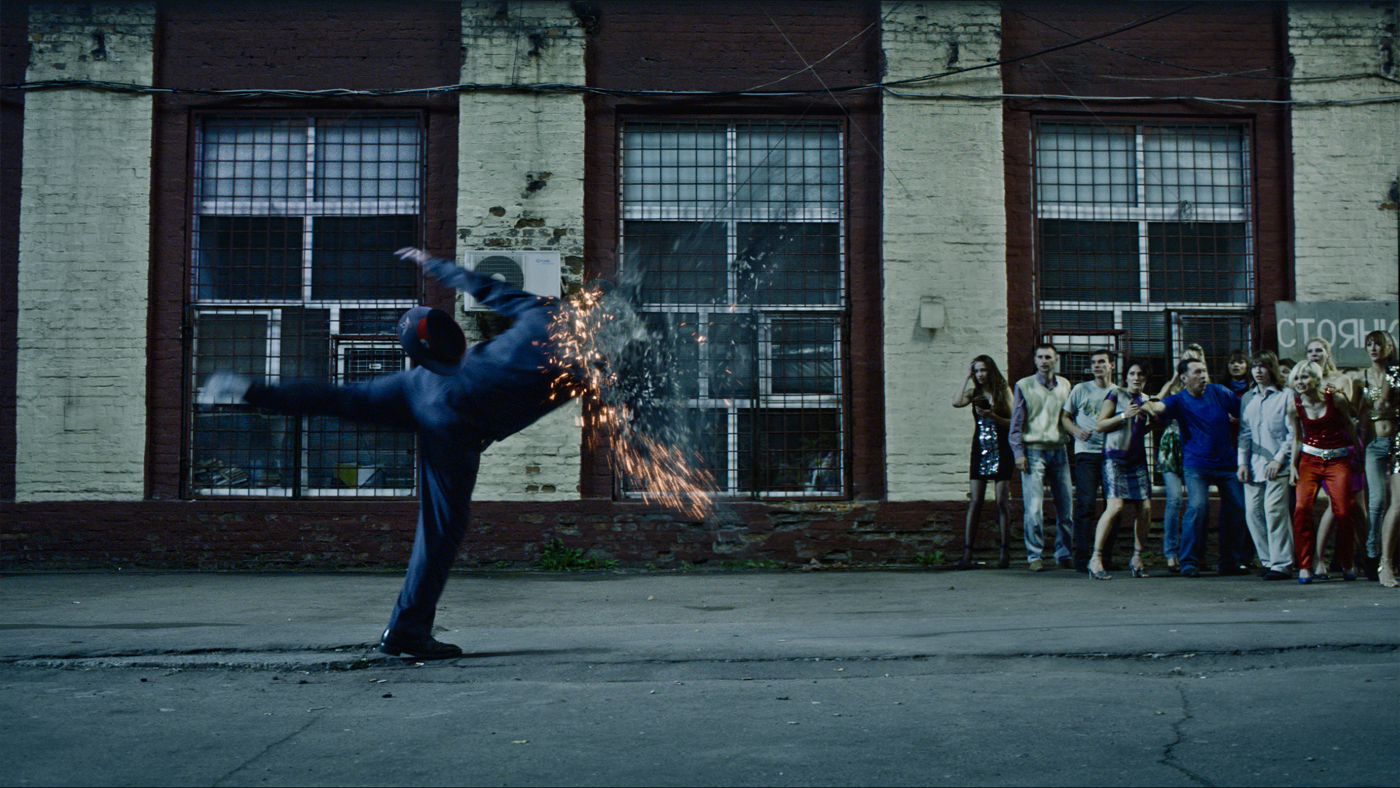 |
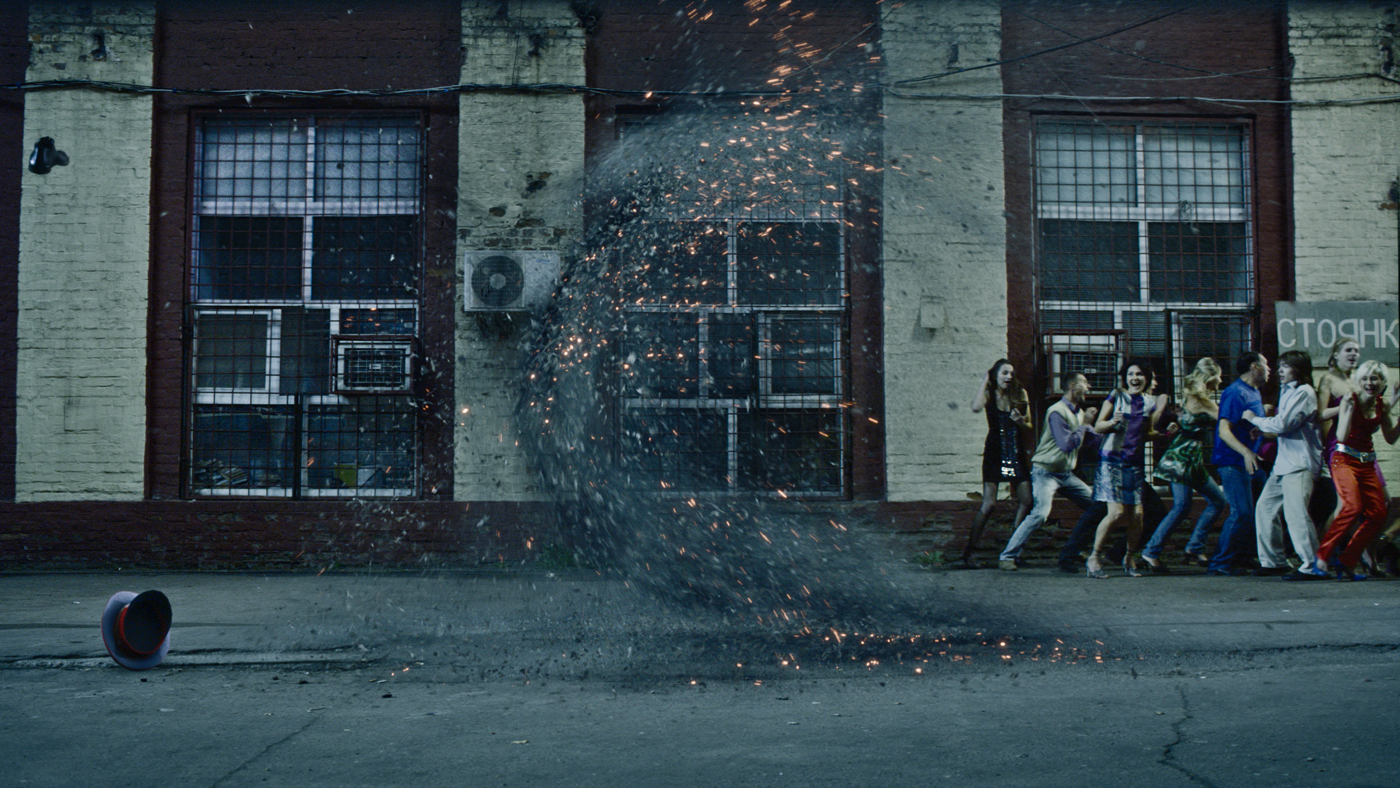 |
How did you manage the particles aspect for the Aliens?
Our RnD team have written a C++ code that created interesting elements that consisted of millions of splines, overlapping into multi-dimensional gradients. Those elements were animated and combined with Houdini particles to produce passes for our compositing team. Also, we have enhanced the ash that the aliens have turned all of the people into. In some shots, we had to add or remove ash to keep continuity.
Did you create digi-doubles for this effect?
We shot traditional T-pose textures right on set, both for actors and their stunt doubles. Then we also scanned them in minutes using an Artec 3D scanner, which was actually developed in Russia.
How was filmed the stuntmen for the shred effect?
They were pulled using wire rigs in most cases, but for the multi-shred shot when the aliens rush though a crowd outside the club the stuntmen (including two girls!) actually jumped and fell on asphalt without any mats. We placed witness cameras to have enough data for rotomotion and tracking.
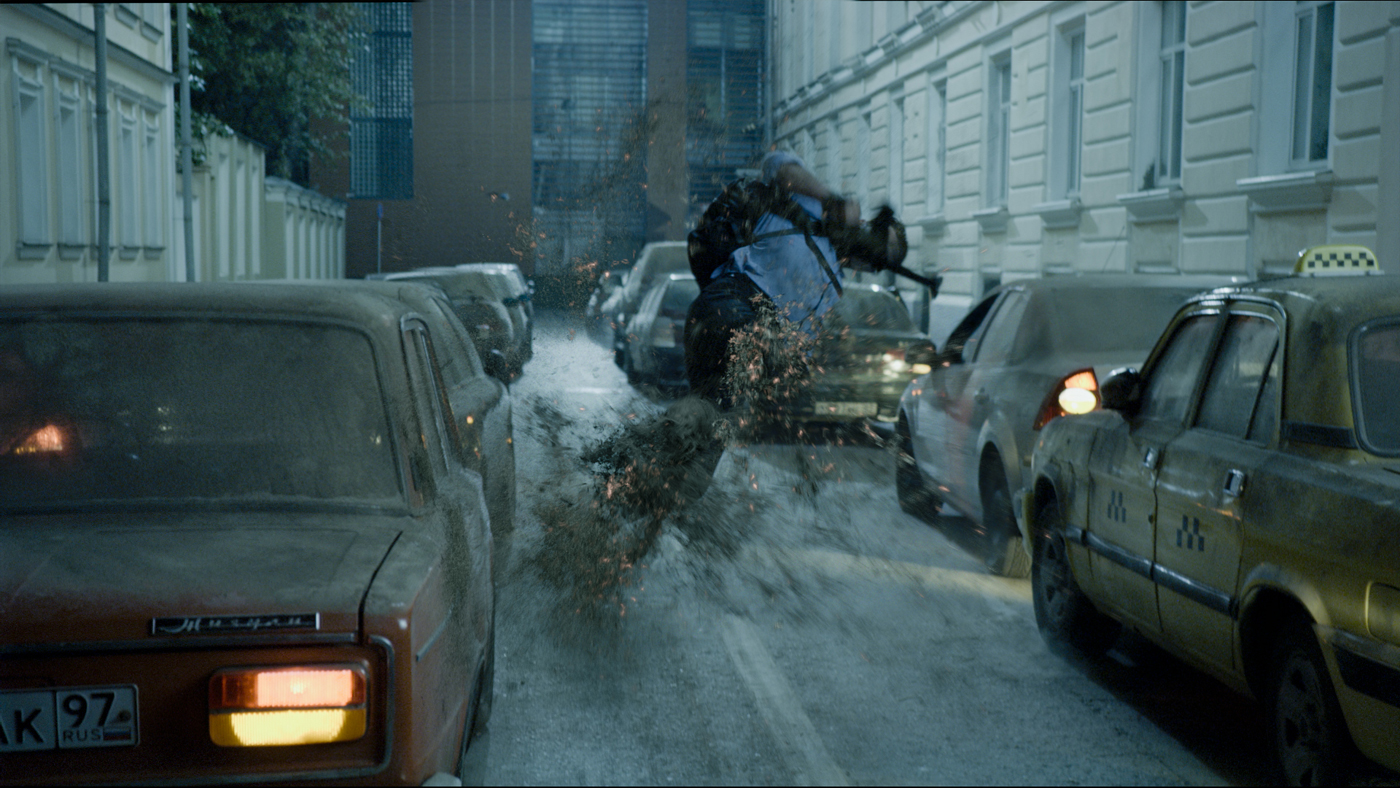 |
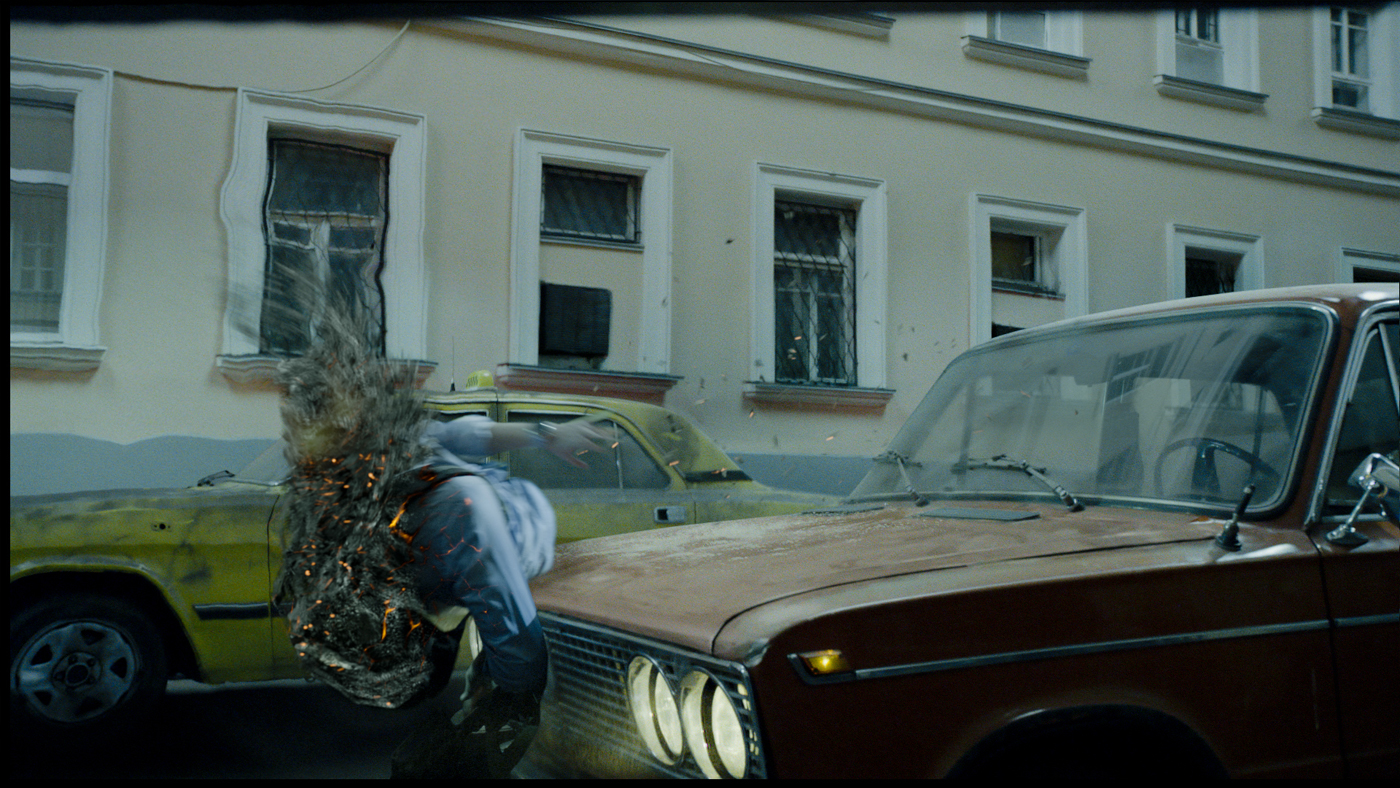 |
Did you used some interactive lights on set to simulate the aliens presence?
The aliens affect all kinds of electric devices, causing them to turn on and light up. In order to show the audience there was an alien approaching, every light bulb on set was rigged to a controller that would flash the lights around the virtual alien.
In some of the shots, we were asked to re-light the scene, so that the alien could move in a way different from what was intended on set. Having HDRI photography for every setup, we were able to achieve that.
How did you design the Aliens POV?
The aliens perceive everything as energy. So, they would clearly see a network of electrical wires or human nerve system. But, we had to make sure the audience would be able to see the location elements in the shot as well.
We’ve developed around 20 designs, combining particles, x-ray and proxy geometry with practical shots. Later, the team at Tata Elxsi designed another POV, which was used in the movie.
Can you tell us more about the Alien Towers?
Alien Towers are basically oil rigs that pump minerals and precious elements out of the Earth. Their designs were ranging from a concrete reinforced structures to a swarm of aliens. The towers were designed as a strong vertical element dominating over Moscow’s flat cityscape, showing scale of alien invasion.
Can you tell us more about the design for the Alien death?
When our heroes find a way to penetrate the alien shield and kill it, the resulting explosion bursts out a lot of debris, including a body piece that Sean later uses as a weapon.
We designed the piece, combining elements of bones, nerve system network and even fish scales. Based on the concept art, the piece was sculpted in Mudbox and physically printed using a 3D printer.
What was the biggest challenge on this project and how did you achieve it?
Having to create effects that had to be original, but line up with the movie’s idea of alien energy, we had to constantly think of the rules. With Chris and Stefen being over 6’000 miles away, we ran daily reviews and made sure our work matched their vision.
To make the shreds more violent, we sometimes had to switch to digi-doubles earlier in the shot that we expected, which was a lot of fun for everybody.
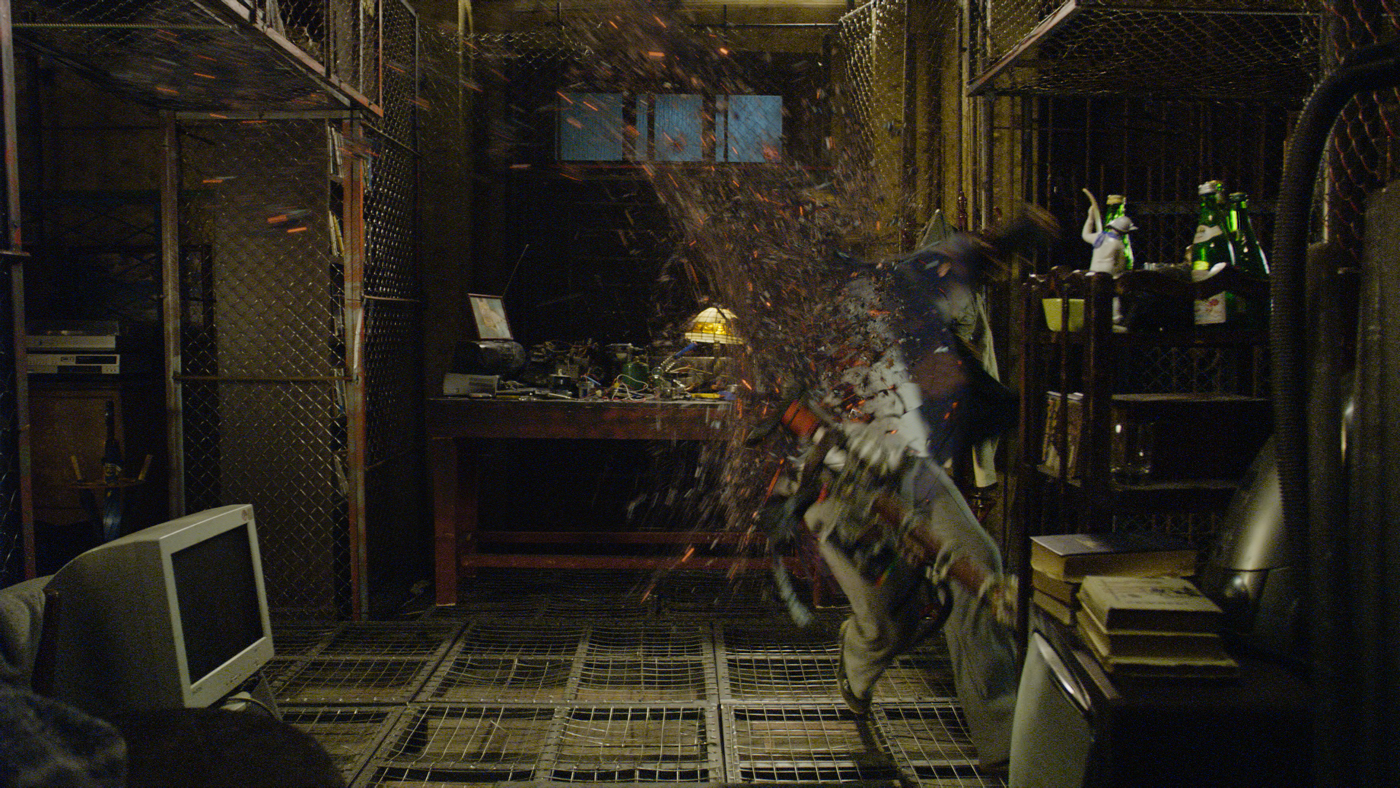 |
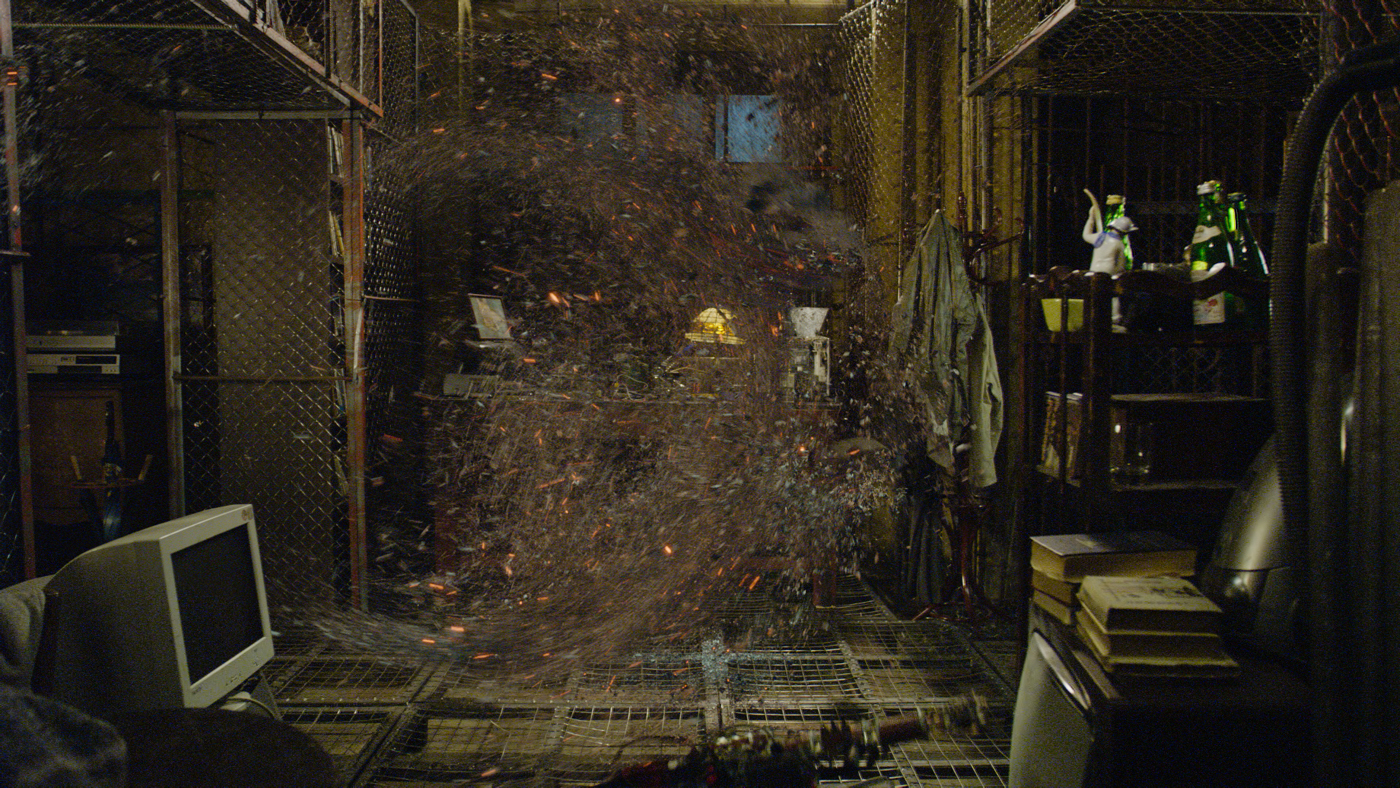 |
Was the movie initially intended to be 3D stereo?
Actually, it was planned to be a 2D release. But, with the AVATAR’s success, all studios naturally considered 3D a good option. But, since shooting 3D in far away Moscow meant a significant change in budget, the studio decided to shoot a test.
It was a short episode with two characters being chased and shred by an alien in an LA alley. We shot it with Sony F35 on a Pace rig. Then, the cut was handed over to our team in Moscow for VFX work. Shortly after presenting the completed piece, the studio has greenlit the show to be a 3D.
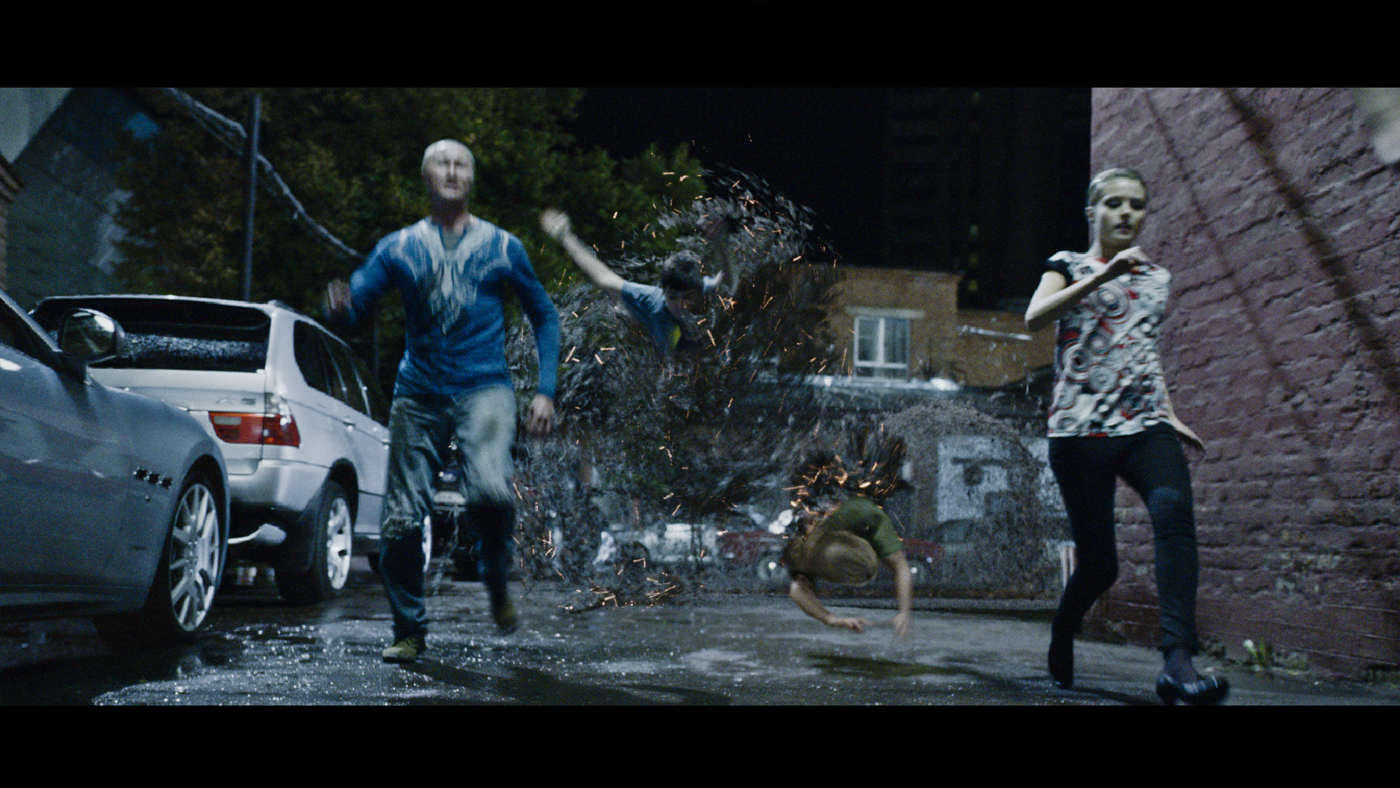 |
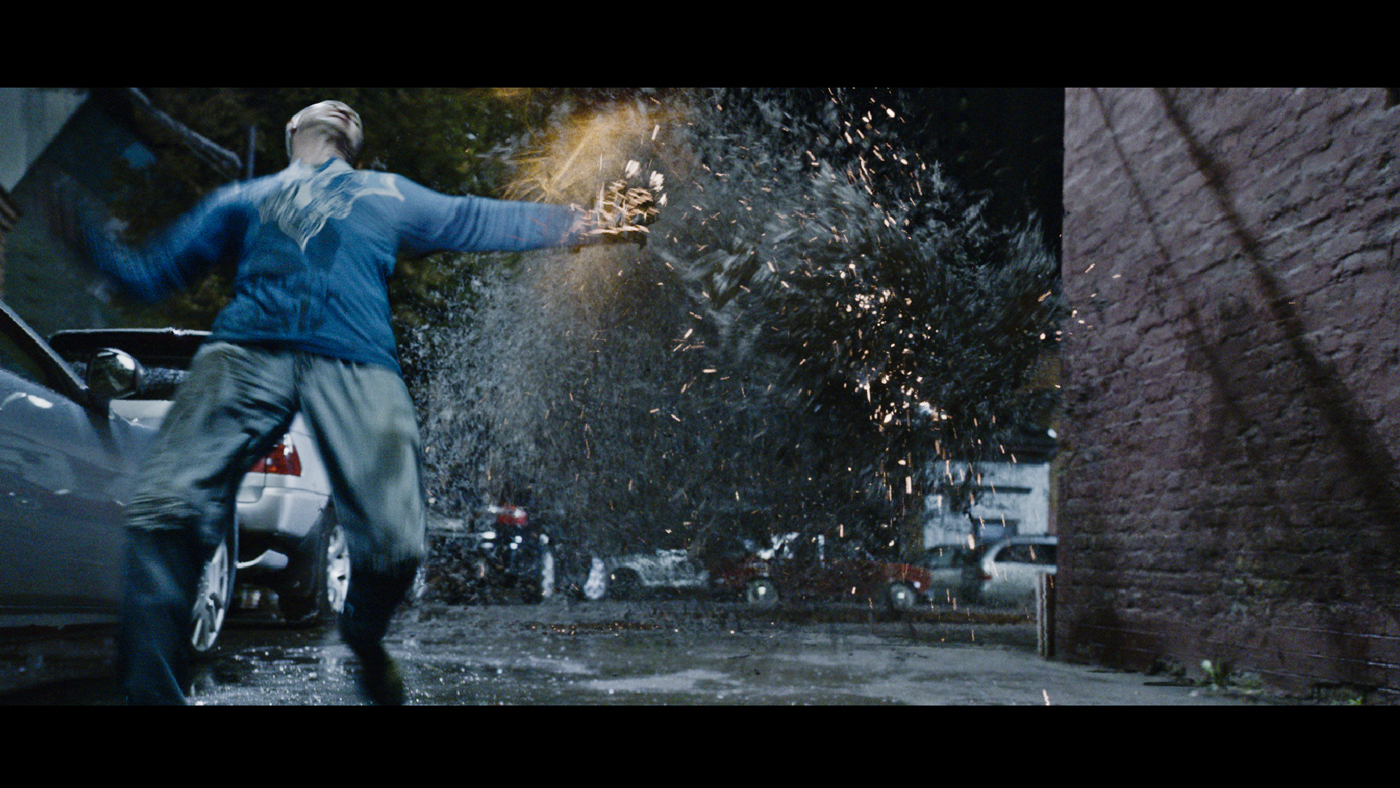 |
What was your experience with shooting 3D?
Most of times Scott Kevan (the DOP) shot with two rigs at the same time, which meant a lot of running for our data wrangling team. They had to make sure everything was documented, from the focal distance to the objects location and relative distances.
Being in the middle of a complex set, and making sure we don’t slow down the shooting process, our guys had to be ninja-accurate and fast. The data we provided was appreciated by colleagues from other VFX houses who relied on our records in their work.
How would you describe the VFX workflow on this movie from a 3D stereo standpoint?
This was a project that benefited a lot from the extra dimension. All of the particle effects worked were fun to create, especially when the shreds happened close to camera. Also, creating subtle alien presence effects in clear open of the Red Square was a challenge, since there was practically nothing to interact with the alien cloak. We have used CG ash to blow off when the alien passes by. Overall, the 3D stereo pipeline that we’ve built, have allowed us to quickly manage last-minute shots and comments and keep up the creative and technical quality to Hollywood standard.
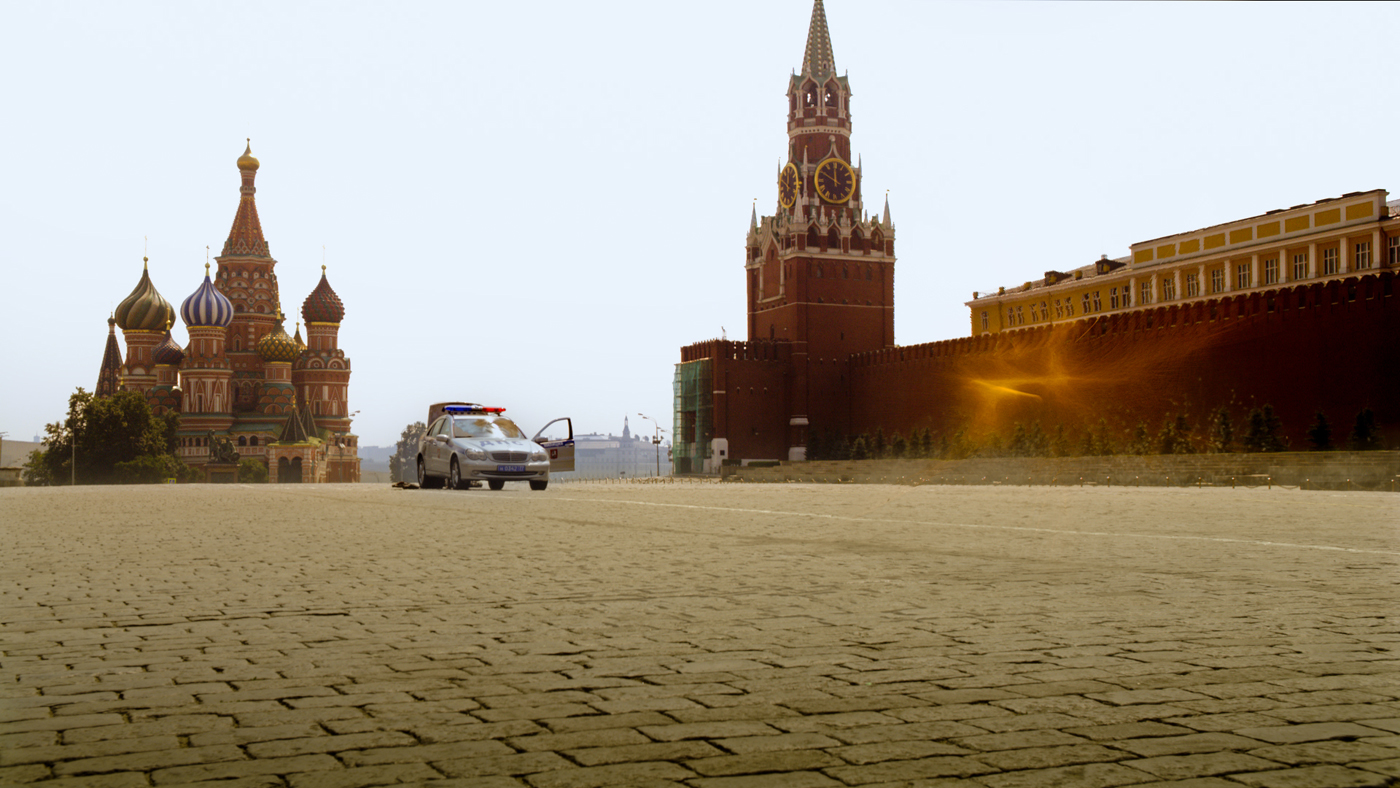 |
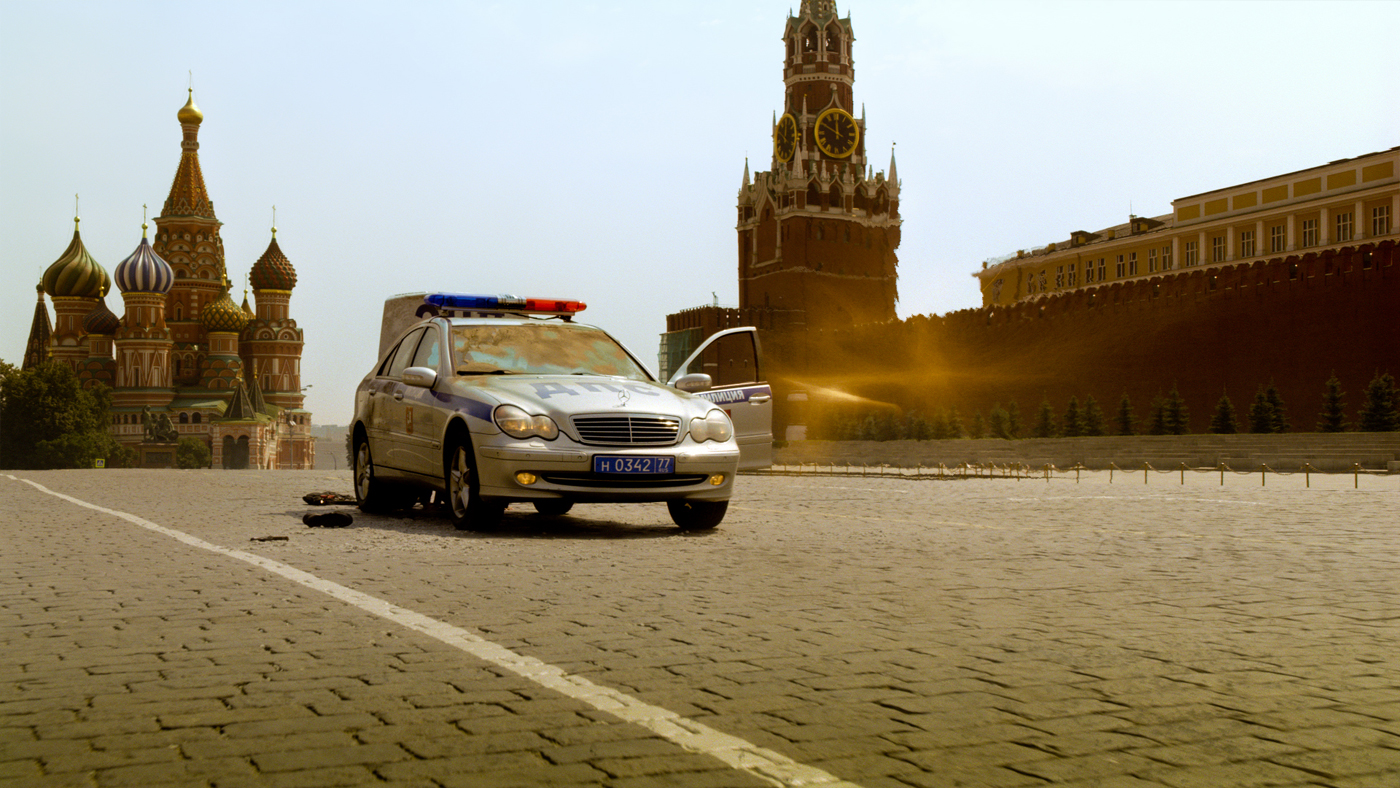 |
Was there a shot or a sequence that prevented you from sleep?
Working with LA usually means staying pretty late for reviews, when the team on the other side of the world just starts their day. But still, we managed to run normal hours and even kept the weekends free of alien invasion as well.
What do you keep from this experience?
Most importantly, me and my team were the first ones in Russia to complete a large 3D stereo project. Being a part of an international team we stayed connected between Moscow, Los Angeles, Paris, Toronto, Prague and Mumbai.
It is always a pressure to run a major studio project, especially for a relatively new player on the international market, such as ourselves. But, we never surrender.
How long have you worked on this film?
My personal overall involvement was about 18 months and my team has completed all of our shots in 6 months.
How many shots have you done?
There was a total of 100+ shots that we worked on.
What was the size of your team?
We had about 30 people on the project, including management.
What is your next project?
Our team has moved to a new company to work on a number of local and international features. One of the projects is a story of the first Russian hydrogen bomb test, which will feature a very detailed look at the explosion and its effects. The other interesting projects feature a subway train crash movie and a children’s tale with lots of magic. We have also recently completed a movie about Vladimir Vysotsky, a famous Soviet singer and actor, who has passed away many years ago. This one had lots of face augmentation to make the audience believe he starred in the movie himself. It was a combination of complex make-up and digital face replacement.
What are the four movies that gave you the passion for cinema?
As a kid, I was greatly impressed by the STAR WARS and ALIEN. Probably those two have determined my career. WHAT DREAMS MAY COME has raised the imagination bar ever higher. However, my favorite movie is Jon Turteltaub’s PHENOMENON. I do believe that people tend to limit themselves and once you learn to step beyond the possible, you can make those dreams come true.
A big thanks for your time.
// WANT TO KNOW MORE?
– Piastro VFX: Official website of Piastro VFX.
© Vincent Frei – The Art of VFX – 2012




